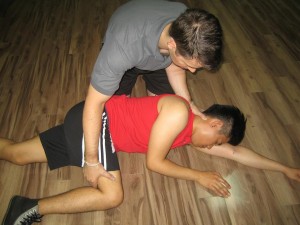Overview Of Head Trauma
When a person has any damage to their brain, skull or scalp that is caused by an injury, they are classified as having head trauma. There are various ways in which head traumas are classified. This includes how severe the trauma is and how damaged the head is.
Closed or Open Injury

One method for classifying the injury is whether this is open or closed.
- A closed injury is referred to as damage that happens that does not break the skull or penetrate the brain. This type of injury can still cause issues such as a bruised brain or brain swelling.
- An open injury causes bleeding as the skull has been penetrated. This type of injury results when the person may be going at a high speed when they are injured, such as hitting a windshield while driving a car.
Types of Head Trauma
There are several types of head trauma. A few common examples include:
- Concussion: This occurs when the brain is shaken, which may or may not have been due to a blow to the head. The effects of this injury can result in a headache or even loss of consciousness.
- Primary lesion: This occurs when there is an injury to the head that results in the displacement of the brain structure.
- Secondary lesion: This occurs over time and is often considered a mechanical damage. They may be related to a primary lesion, or unrelated to this.
Severity of Head Trauma
The severity of head trauma is going to affect how the injury is treated.
- A mild injury can happen to anyone. The symptoms of this are usually short, and there is no permanent damage caused. Some examples of a mild injury include:
- Dizziness
- Small cut or bump
- Headache that is mild
- Poor balance
- Nausea
- Ringing in the ear
- Blurring of the vision
- Temporary amnesia
- Severe head injuries call for immediate attention so that the damage can be accessed and effects of this can be stopped. Some of the indications of a severe head injury include:
- Unusual eye movement
- Inability to focus
- Vomiting
- Convulsion
- Bleeding from head
- Poor muscle control
- Loss of consciousness
What To Do With Severe Trauma To The Head
- Make sure the person doesn’t move. Till medical assistance arrives, make sure the injured individual is still and composed, with the head and shoulders marginally raised. Don’t transport the individual except if required, and don’t shift the individual’s neck. If the casualty has a helmet attached, leave it on until medical assistance arrives.
